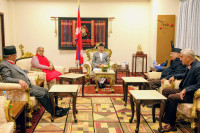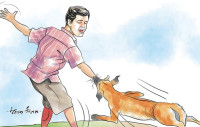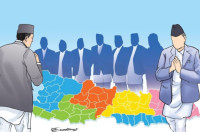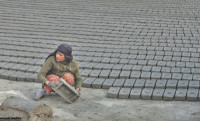Opinion
Finding solutions
It is time for all stakeholders to work together to bring the resettlement of Bhutanese refugees to a sustainable end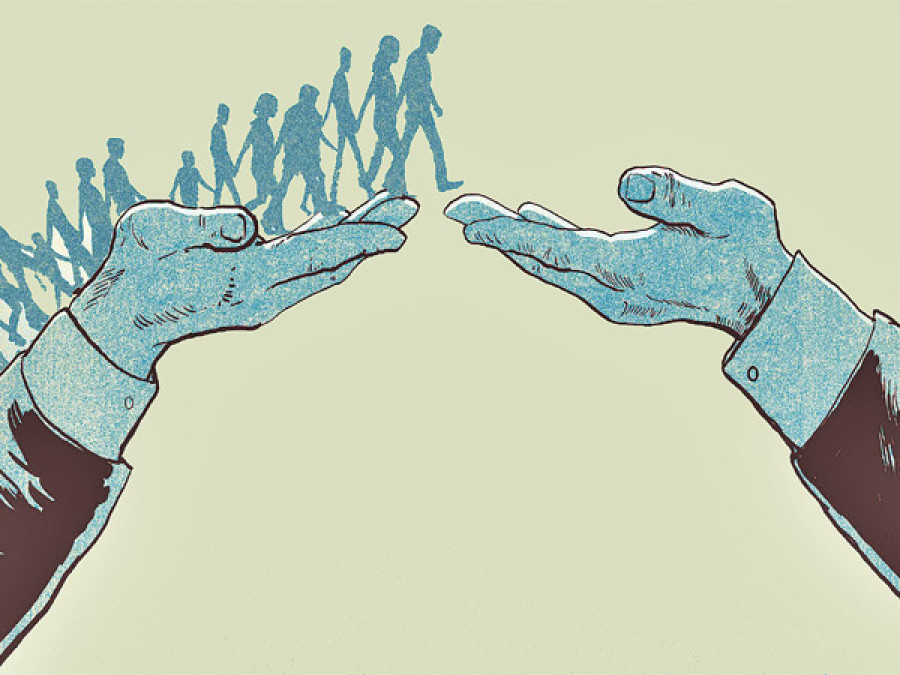
Craig Sanders & Maurizio Busatti
In a few days, 53-yearold Devi Maya Thapa will leave Nepal for the US to begin a new life after spending more than two decades in a Bhutanese refugee camp in eastern Nepal. As the 100,000th Bhutanese refugee to be resettled from Nepal, the departure of Devi Maya and her family marks a major milestone in a programme that has dramatically changed lives.
A combined effort
In 2007, the Government of Nepal and a core group of eight countries agreed on the launch of a group resettlement programme for Bhutanese refugees which eventually unlocked one of the most protracted refugee situations in Asia. Our two agencies— United Nations High Commissioner for Refugees (UNHCR) and International Organisation for Migration (IOM)—were called upon to implement this complex undertaking.
Now, eight years later, almost nine out of 10 refugees are productive members of communities in Australia, Canada, Denmark, the Netherlands, New Zealand, Norway, the UK and the US. Many former refugees have already become naturalised citizens while others are on the way to becoming one while enriching their new communities through their presence and hard work.
This achievement would not have been possible without the strong and sustained cooperation among many stakeholders, starting with the Government of Nepal and the eight resettlement countries. At the same time, Bhutanese refugees have received support for their protection and well-being from a highly committed roster of NGO partners including The Lutheran World Federation, Association of Medical Doctors of Asia, Transcultural Psychosocial Organisation Nepal, CARITAS, and the Nepal Bar Association.
For over two decades, our UN sister agency, the World Food Programme (WFP) not only met the daily nutritional needs of refugees through regular food distributions, but also boosted refugee self-reliance through innovative gardening projects. Other UN partners like the UNDP, UNFPA, Unicef, World Health Organisation and UNAIDS have also played a supporting role to the Bhutanese.
Inspiring example
Finally, over many years a diverse group of donors from the eight resettlement countries, the European Union, Japan, Korea, corporations, foundations and individuals have generously supported the Bhutanese refugees and the UN and its NGO partners.
After the twin earthquakes in April and May, and in a touching effort to repay some of the generosity and kindness of their Nepali hosts, the Bhutanese refugees raised funds in Australia, the US and other resettlement countries to support relief efforts. At the same time, a small team of refugees supported by the UNHCR travelled from the camps to Ramechhap district to build shelters for female-headed households.
Looking back, the resettlement of 100,000 refugees has lifted a heavy burden on Nepal while at the same time creating life-changing opportunities for the resettled refugees. More work remains to be done, however. Some 10-12,000 Bhutanese refugees are expected to remain behind as the resettlement programme winds down. Camps cannot be maintained indefinitely and so now is the time for all stakeholders to work together to bring this situation to a sustainable end.
Today there are over 60 million people who are forcibly displaced around the world, most without any hope of a durable solution. As Devi Maya Thapa and her family soon set off for the US, the resettlement of 100,000 refugees from Nepal is an inspiring example of what can be achieved when solutions-oriented government policy is matched with international solidarity.
Sanders is the UNHCR Representative and Busatti is the IOM Chief of Mission in Nepal




 12.12°C Kathmandu
12.12°C Kathmandu
